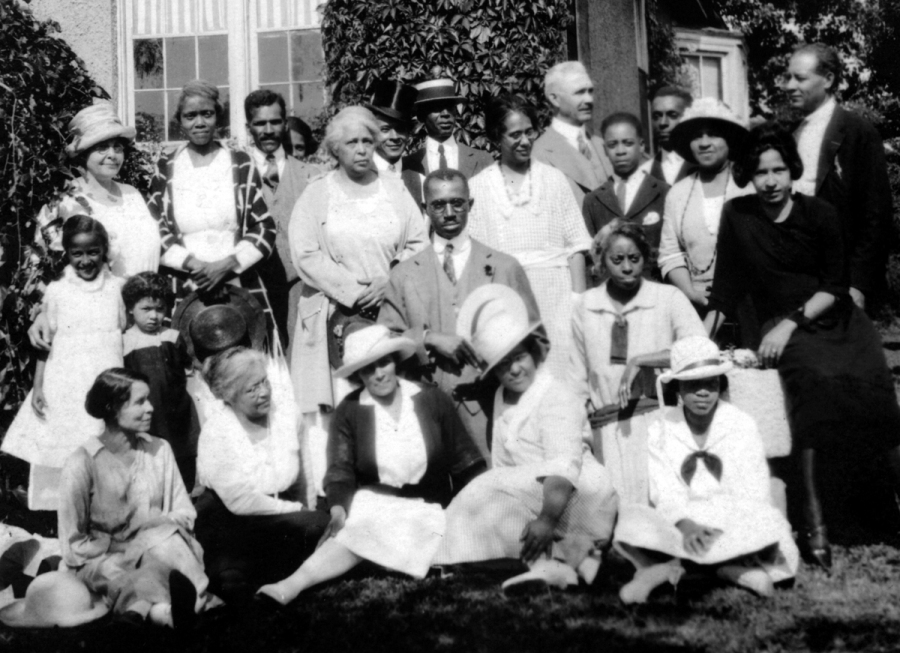— Short Series —

The growth of the African American communities in Chicago’s suburban North Shore was unique. Instead of first settling in Chicago, most early settlers came directly to these North Shore communities. Evanston was and still is the longest stable community dating back to 1855.
Its growth would increase by over 4,000 residents by 1930
As early as the 1840s, there was evidence of early African Americans settlers in Evanston. In the 1850 handwritten census, eight African Americans were reported living in Evanston, the Melock family, Gill Reece and Lumus Carney. In 1855, 15-year-old Maria Murray was brought into Evanston. She was bought out of slavery by the Allen Vane family and worked as a domestic in their lakefront home. During the 1860s, more families and individuals of African American decent settled into Evanston. These included the Garnett, Branch and Scott families as well as George Robinson, who married Maria Murray in 1868. Though Evanston has no physical or documented Underground Railroad sites, it is not a far stretch to speculate that African Americans escaping north to Canada, had passed through Evanston. Early census point to former slaves living in Canada who later came to Evanston.
Ebenezer A.M.E. Church was founded on October 30, 1882
The three earliest African American churches in Evanston were established in the latter part of the 1800s. Ebenezer A.M.E. Church was founded on October 30, 1882, followed immediately by Second Baptist Church (November 15, 1882), and later Mount Zion Baptist Church (August 15, 1894). African American businesses were also established in the downtown area. Clubs, secret orders and various other organizations were also founded during the same period. In 1894, Mr. Sandy Trent was the first African American police officer on patrol and Emma Georganna Garnett became the first African American graduate of Boltwood School.
By 1900, the African American population reached 737 residents out of a total population of 19,259. Its growth would increase by over 4,000 residents by 1930. By the 1920s, this community established organizations and facilities that catered to the growing African American community. These included one of the first African American Boy Scout Troop in the Nation (1912), the Evanston Sanitarium (1914), the Emerson Street YMCA (1914), Chapter N.A.A.C.P. (1918) and The Iroquois League (1917). Despite the enforcement of illegal housing restrictions, discriminatory practice ordinances and covenants in housing deeds, the growth of a permanent African American community became evident and eventually bounded by the north shore canal, Emerson Street and Green Bay Road. 2000 census data has the African American population at 16,704.
Source: From Shorefront’s “North of Chicago” traveling exhibit.
In about 1976 I was visiting a home on Sheridan Road between Church and Davis and was shown a hole in the wall behind a cupboard. I was told by the family that lived there (the Gilberts) that this was a hiding place on the Underground Railroad
Had to understand Bishop W.D.C.Williams Sr left out of this equation.Early 1900’pioneer built churches and choirs across nation home based in Evanston early 1900’s.Owned many properties throughout Evanston where migrants found housing also owned fleet of Cadillacs in which many where transported in to area among them Bishop Ford whom expressway bares his name.Built Williams Memorial Temple on Hoveland Ct aprox 1923.Pioneer in original recording of gospel music holding a Masters of Music degree among others.Longstanding Moody Bible Institute advocate.One of Mahalia Jackson’s last performance was at a Gospel Concert by Bishop W.D.C.Williams Sr at I believe it was the Mecca in Milwaukee,as his eldest grandchild I was there.At one time owned many properties in Evanston,broke ground at Emerson n Wesley now fire house also the old so called afro-american YMCA on Emerson later yeilding to another faithbased group now NU facilities.
Thank you Mr Williams. There are many who still need to be recognized in the long and intertwined history of the Black experience on the North Shore. The trouble is that many stories such as yours are with individuals. Sounds like this should be an article…would you be interested in writing one for the journal. This is a contributors forum.